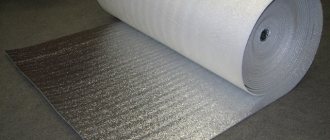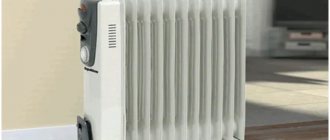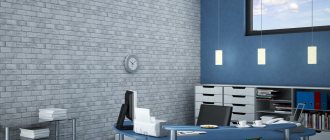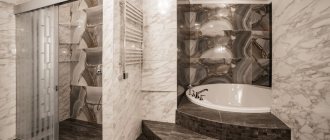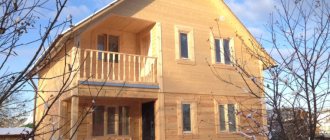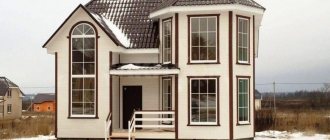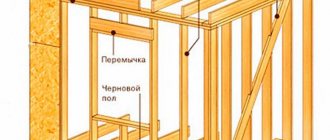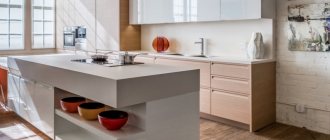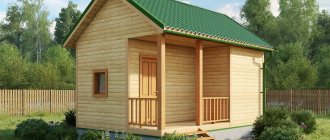Updated: 04/23/2021 12:51:21
Expert: Konstantin Borisovich Polyakov
When working with wood, many manual and electronic tools are used. Planers and jointers are among the most common among woodworkers. In order not to spoil the work, it is important to have a clear understanding of the specifics of each of them. How high-quality will the result of processing the product be and how are planers and jointers generally used? Our experts will tell you.
What is a jointer used for?
The design is always equipped with 2 knives. The presence of a pair of knives makes it possible to improve the quality of processing, not waste a lot of time, and prevent worker overwork.
Jointer knives have a greater sharpening angle compared to a plane. Gradual progress through the material guarantees an excellent result.
- The length of the frame is 3 times longer than that of a standard product. The cutting block of the jointer has a special chip breaker or chip breaker.
- In combination with an extended base, the level of final processing can be significantly improved.
- A handle is attached to the base of the jointer, which guarantees comfortable operation and equal pressure on the entire cutting surface of both knives.
For certain tasks, a shorter jointer is used. The dimensions of its frame do not exceed fifty centimeters. This unit is called a semi-jointer. Each of them is given his own license plate. It determines the scope of use and properties of the structure.
The most popular are semi-joints, numbers five and six. They are characterized by a difference in the width of the tip. It is 10 mm.
Thanks to its parameters and the improved design of its blade, it is easier to remove the top ball. They can easily process wood units that have an impressive area.
Semi-jointer number six has fairly compact dimensions. The duration of the frame is several times shorter compared to the classic model. Small dimensions made it possible to obtain equipment with a small mass.
Thanks to this, the worker does not overwork, and as a result, a high-quality product can be obtained. This point can be attributed to the first advantage of this structure. The second advantage is the provision of fairly uniform planing of the workpiece coating.
Shape planing tools
Zenzubel
Purpose. Selecting and cleaning quarters, making rectangular cuts, folds, grooves, sharpening perpendicular surfaces of wooden blanks.
Peculiarities. The blade of the zenzubel is a spatula, and the width of the cutting edge ranges from 18 to 30 mm. It can be straight or oblique, depending on how the knife is secured relative to the sole of the tool. The blade length is usually 210 - 220 mm. If it is oblique, then it has two cutting edges - the bottom and the side. There are models with a narrow working part, no more than 12 mm. This is an oblique plane, in which the knife is sharpened along two edges converging into an acute angle. It is suitable for making dovetail grooves and planes very cleanly - you can even cut across the grain. When using ordinary chisels, to remove a quarter, first a mark is made along the workpiece, and then a plane is drawn along the line to remove the first layer of wood - a small ledge is obtained. After this, they pass the tool several more times. By the way, it is recommended to select a quarter first with a rebate, since the accuracy of the work is higher and preliminary marking with a thicknesser is not required - the rebate is used only for finishing.
Kantenhobel
Purpose. Chamfering, processing edges for the purpose of alignment and finishing of dimensions. It is used not only with wood materials, but also with plastic and plasterboard.
Peculiarities. The Kantenhobel blade has a trapezoidal shape. Some models may have two blades that are angled relative to the side of the sole. Depending on the installation of the knife, a cut along the edge is obtained at an angle, for example, 22.5° or 45°. Thus, it is possible to achieve the required edge angle for joining the workpieces along the entire length, which eliminates gaps and irregularities. This tool is also called an edge plane.
tongue and groove
Purpose. Making longitudinal grooves along the edges of wooden blanks.
Peculiarities. The tongue and groove body consists of two blocks, which are connected with screws. One of them is a guide, the other holds the blade. As a rule, the design provides an adjustable stop to set the desired distance from the edge of the workpiece to the edge of the groove. There is a persistent protrusion in front of the blade, which allows for deep cutting without bending the knife. Depending on the width of the blade, a groove is obtained from 2 to 10 mm. When the cutter passes along the edge of the workpiece, a rectangular recess is made, which is called a groove or tongue. The recess is prepared for joining the workpiece with another, which has an appropriately sized protrusion along the edge, made with a federgubel.
Federgubel
Purpose. Making a longitudinal protrusion along the edge of the workpiece.
Peculiarities. This type of plane differs from others in the special shape of the blade: it does not have a flat edge, but an opening in the center that forms a ledge. When the federgubel moves along the edge, a rectangular protrusion is formed - a ridge, which subsequently joins the groove (tongue) of the second workpiece processed with the tongue and groove.
Mold
Purpose. Shaped processing, giving a special shape to the profile of the workpiece. Often used in the manufacture of baguettes, wooden cornices, and doors.
Peculiarities. This plane has a special cutter with a figured edge. Its sole is multi-stage, you can install different knives depending on what profile you need to get. Passing along the front side of the workpiece, the working part leaves a groove (shaped profile) - hence the name.
Falzgebel
Purpose. Making a fold (groove) along the edge of long parts without preliminary marking.
Peculiarities. The tool has a stepped sole and a wide last. Due to this, it is possible to make grooves of the same size without preliminary marking. To select rebates of different sizes and profiles, some rebates provide for the replacement of a stepped sole. It is possible to install an additional side blade for trimming the vertical wall of the quarter.
Shtap
Purpose. Rounding the edges of parts.
Peculiarities. This plane has a special blade shape: its edge has a semicircular recess. Accordingly, the sole of the instrument is concave. When passing along the edge of a rectangular profile, the working part removes chips in such a way that the edge acquires a semicircular profile.
What is the difference between a jointer and a plane
A specialist masters a small but integral plane in carpentry mainly only in the first stages of working with wood raw materials.
The main task of this stage of work is to make the material smooth, eliminating noticeable tubercles, knots and bulges from its surface. Then the worker, as a rule, takes another device.
- If we talk about the secondary processing of a fairly large product, then the jointer comes first, since the traditional option cannot properly level the coating over the entire area.
- The second one is laid like a “bridge” on part of the part, slowly eliminating minor defects from its surface. If you watch the specialist’s activities at this time, you will notice that at the start of work, small chips will fly out from under the structure, and then they will begin to come off in strips or elongated coils.
An additional function of the jointer is edge processing.
This structure will be an integral tool when gluing the edges of two surfaces, as it makes it possible to perform better processing.
Peculiarities
Initially, it should be noted that manual and stationary electric jointers are largely similar to each other from a device point of view. The operation of such equipment is based on the transmission of torque from the power unit (electric motor) to the knife drum.
During rotation, the tool head moves in a vertical plane. The electric jointer is equipped with several types of wood knives. By the way, this is precisely the main difference between an electric jointer and its mechanical “ancestor”. This means that processing is carried out through a rotational movement rather than a translational one.
It is important to consider that the number of knives may differ for different models of power tools, usually ranging from 1 to 3.
Professional modifications of this popular and sought after equipment by craftsmen have a number of important features. These include:
- heavy weight and increased clamping force;
- maximum precision when processing wood;
- increased productivity;
- the ability to quickly replace cutting elements.
Due to their high performance indicators, electric jointers are today widely and successfully used both in domestic conditions and on an industrial scale. At the same time, one of the most significant disadvantages of the equipment is its rather high cost.
Types of jointers
Available options include:
- Manual (mechanical) - can be plastic, metal, wood or a combination - are almost identical in functionality, however, the technical properties directly depend on the material used to manufacture the construction equipment frame;
- Electric – thanks to the additional equipment of an electric motor, they make it possible to carry out large volumes of work at fast processing rates.
Wood structures are in great demand when processing wood in everyday life.
Comparative characteristics
- Since a jointer is a type of planer, there are not many differences between them. Both products are used to remove “excess” material from workpieces in order to obtain a perfectly flat surface. The main difference is the degree of processing of the product
.
- The plane is used as a tool for primary processing
. The thickness of the removed wood layer is usually set when setting up the equipment. Wood planing is primarily intended to eliminate knots, bumps and other irregularities. The design itself is always simple: 2 elements - a block and a knife.
- The jointer usually has a longer body
, providing very tight pressing of the product to the wood being processed. Most often, the jointer is equipped with two blades, allowing for finishing.
Hand plane device
Since its inception, the design of the plane has remained almost the same. Only the material used to produce the basic components has improved. Initially, the frame and other components were exclusively wooden.
Currently, many types of metal and plastic are often used for this.
Despite this, the main components of the plane are:
- Block. Load-bearing part of the structure. The basic components of the product are fixed on its surface;
- Front and rear handle. Designed to properly hold equipment in the hands of the consumer;
- Sole. The lower flat component of the block. Allows the product to slide over the coating of the workpiece;
- Slot. Necessary for mounting the knife edge and removing chips;
- Knife. Working component of the product. Thanks to it, the outer layer of material is removed. They make exclusively metal;
- Fasteners and bolt. They serve as a tip retainer, a coordinating part for waste disposal and a knife for crushing chips. In certain variants, the wedge method of fastening the sharpening is used.
Mechanism of operation
The mechanism of operation of the product consists of removing the outer ball of the tree using a device, a tip, securely fixed in the frame.
Before the planing process, it is necessary to carry out preparation work by performing the following manipulations:
- Align and secure the clamp and cutter of the structure with the fastening bolt.
- Place the cutter of the product in the working position, moving it from the slot to the desired interval. Do not forget that the edge of the cutter should be close to the sole.
- After mounting the cutter to a suitable offset, it is necessary to secure it using a clamping plate or a wooden blade.
- Carry out a test run of the unit on coating the workpiece. If necessary, make additional adjustments to the tip.
